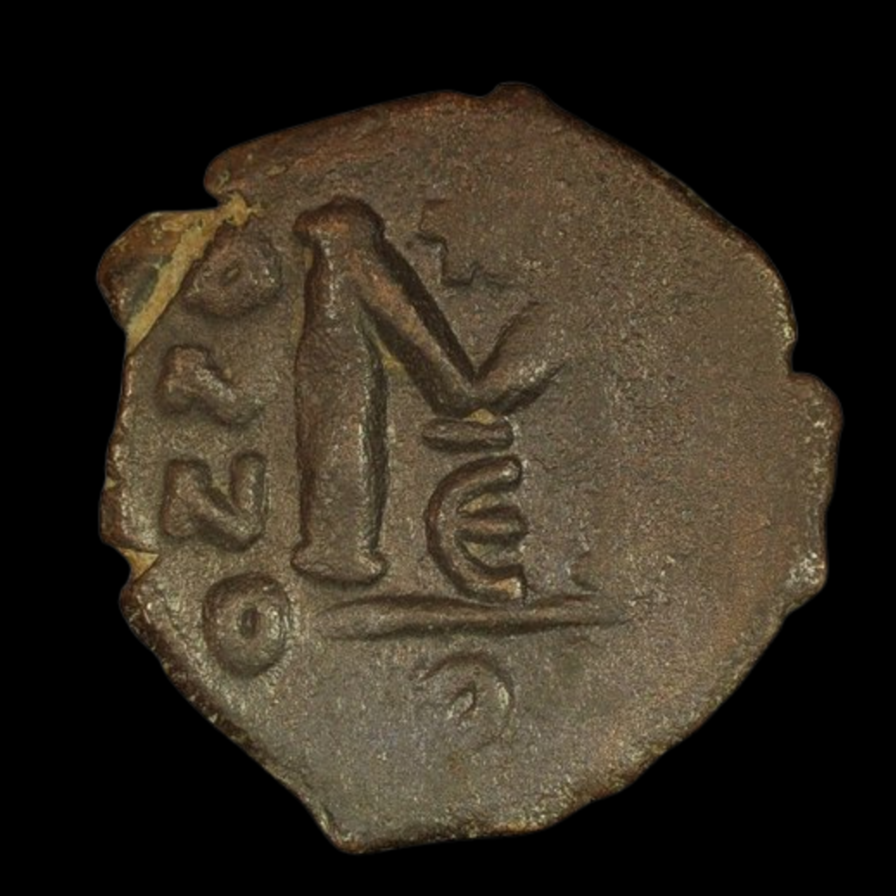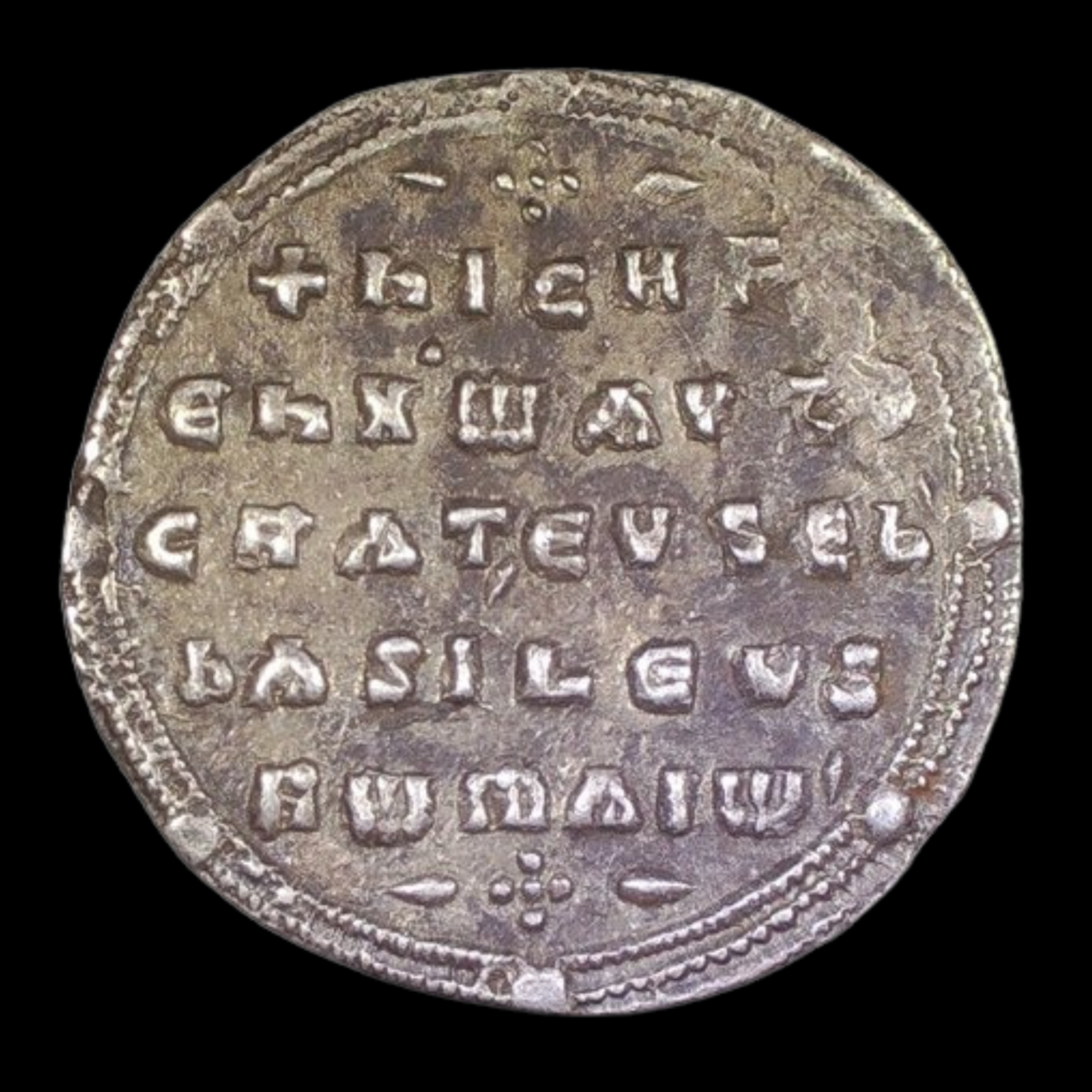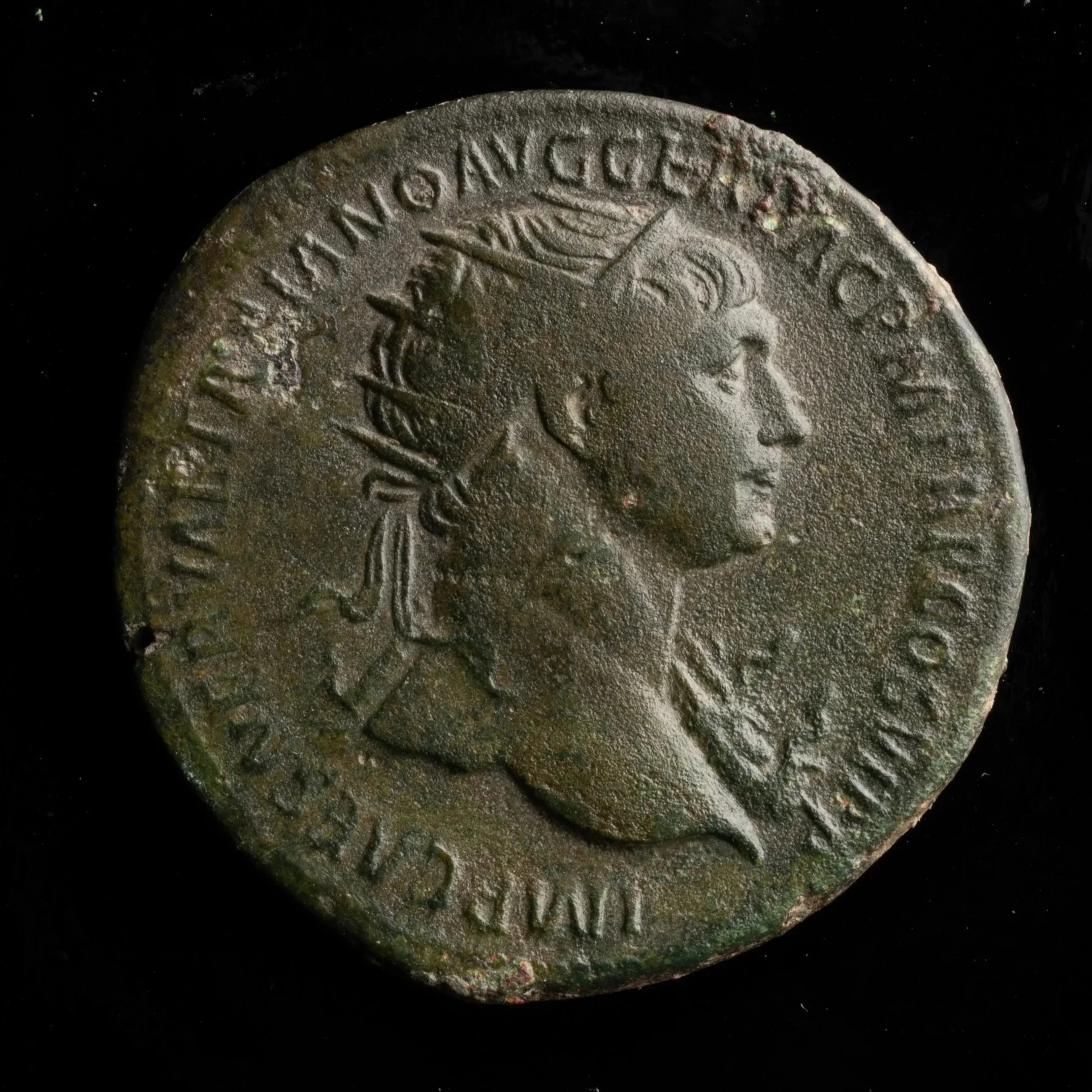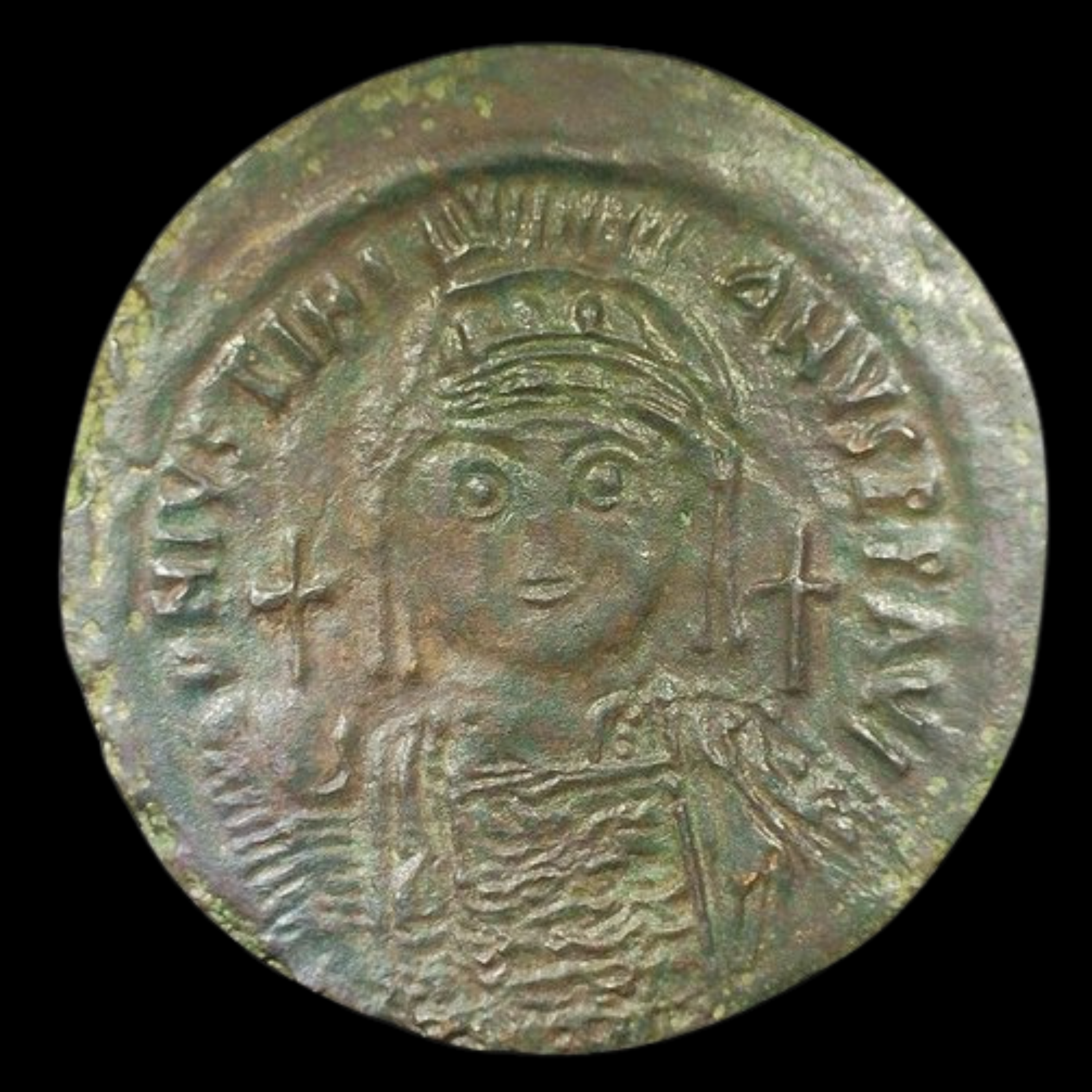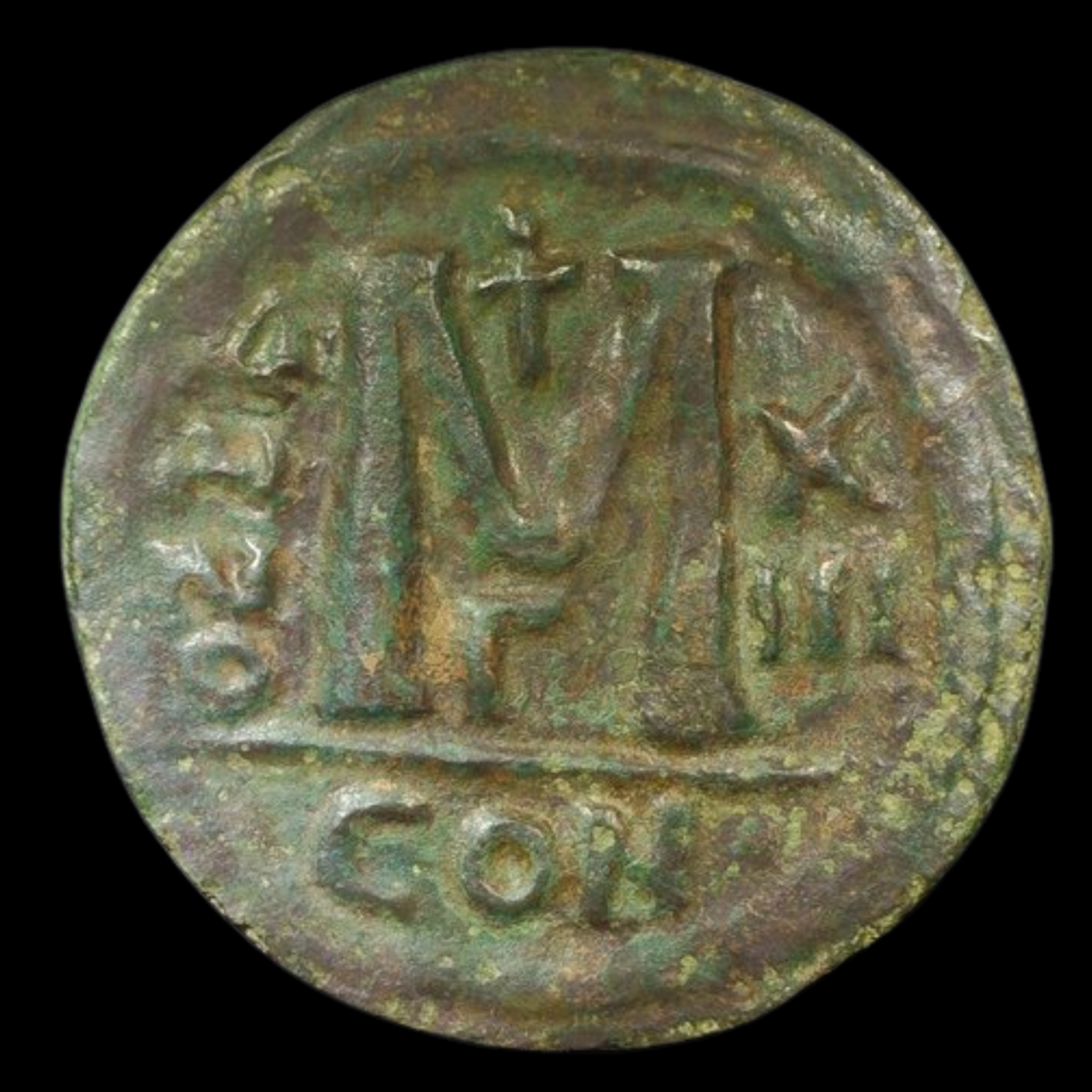 Image 1 of 1
Image 1 of 1


Byzantine Bronze Follis of Emperor Heraclius (about 1,400-1,380 years ago)
This bronze follis was issued during the reign of Emperor Heraclius, who ruled the Byzantine Empire (Eastern Roman Empire) from 610 to 641 CE. Minted during a period of profound transformation and crisis, this coin reflects the empire's evolving artistic style and religious symbolism as it faced existential threats.
Coin Description:
Front side: Typically shows Emperor Heraclius standing with his sons and co-emperors Constantine III and Heraclonas. In earlier issues, Heraclius appears beardless, while later coins show him with a distinctive long beard. He wears Byzantine imperial regalia and a crown.
Back side: Features a large letter "M" (representing 40 nummi) with a cross above, the mint mark below, and often the year of reign indicated by Greek numerals on either side of the M. Later issues show increased religious symbolism reflecting the empire's struggle against Persian and Arab invasions.
Technical Details:
Material: Bronze
Denomination: Follis (worth 40 nummi in the Byzantine monetary system)
Minting date/period: 610-641 CE (approximately 1,400-1,380 years ago)
Condition: Varies by specimen
Historical Significance:
This coin circulated during one of Byzantine history's most turbulent periods, when Emperor Heraclius reorganized the faltering empire to confront existential threats. Initially successful against the Sassanian Persians, reclaiming Byzantine territories including Jerusalem, his later reign witnessed the catastrophic loss of Syria, Palestine, Egypt, and Mesopotamia to the expanding Arab Muslim forces. The coin reflects this pivotal transition period when the classical Roman world yielded to the medieval Byzantine state.
This bronze follis was issued during the reign of Emperor Heraclius, who ruled the Byzantine Empire (Eastern Roman Empire) from 610 to 641 CE. Minted during a period of profound transformation and crisis, this coin reflects the empire's evolving artistic style and religious symbolism as it faced existential threats.
Coin Description:
Front side: Typically shows Emperor Heraclius standing with his sons and co-emperors Constantine III and Heraclonas. In earlier issues, Heraclius appears beardless, while later coins show him with a distinctive long beard. He wears Byzantine imperial regalia and a crown.
Back side: Features a large letter "M" (representing 40 nummi) with a cross above, the mint mark below, and often the year of reign indicated by Greek numerals on either side of the M. Later issues show increased religious symbolism reflecting the empire's struggle against Persian and Arab invasions.
Technical Details:
Material: Bronze
Denomination: Follis (worth 40 nummi in the Byzantine monetary system)
Minting date/period: 610-641 CE (approximately 1,400-1,380 years ago)
Condition: Varies by specimen
Historical Significance:
This coin circulated during one of Byzantine history's most turbulent periods, when Emperor Heraclius reorganized the faltering empire to confront existential threats. Initially successful against the Sassanian Persians, reclaiming Byzantine territories including Jerusalem, his later reign witnessed the catastrophic loss of Syria, Palestine, Egypt, and Mesopotamia to the expanding Arab Muslim forces. The coin reflects this pivotal transition period when the classical Roman world yielded to the medieval Byzantine state.





